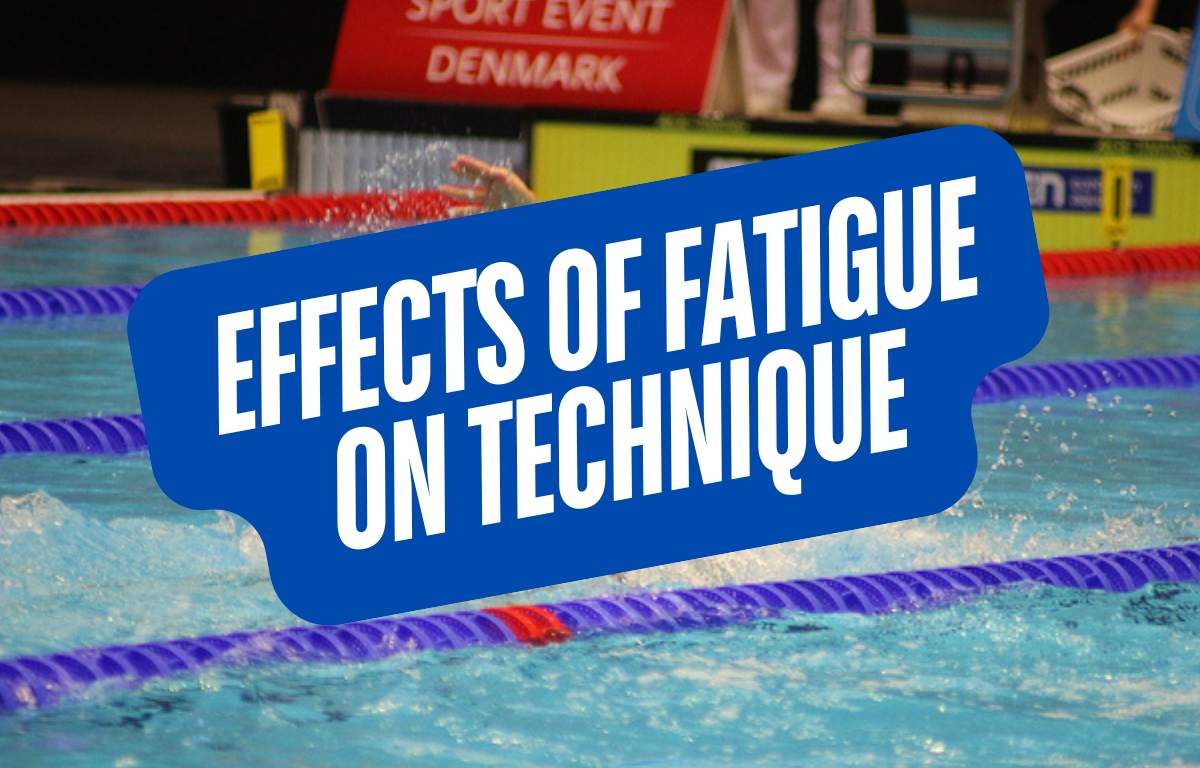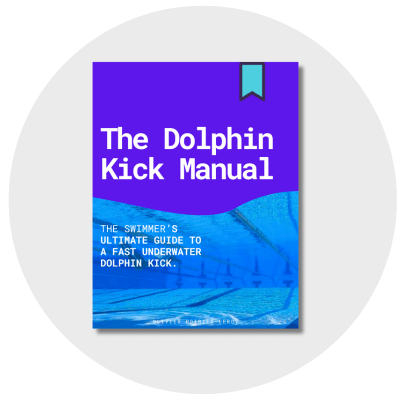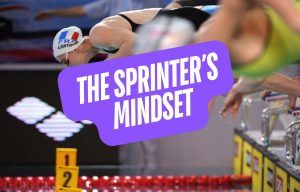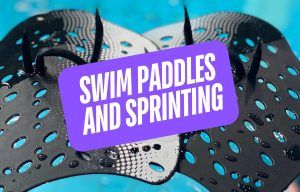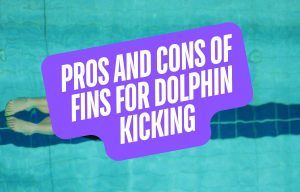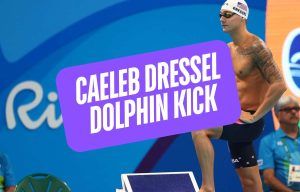Fatigue ruins more than your speed, it also breaks your stroke. Let’s look at how technique changes when tired and how to train against it.
One of the primary goals of practice is building the conditioning to be able to withstand the effects of fatigue in competition.
We log the hours in practice so that we “die” less when racing.
And while the effects of fatigue are pretty easy to spot…
Legs feel like cement
Arms feel like they are churning butter
And speed falls off a cliff
What’s happening to our stroke? And what can we learn from the technical effects of fatigue to train smarter?
Great questions, so let’s take a looky-loo!
Effects of Fatigue on Swimming Technique
A group of researchers led by Alberty et al. (2009) set out to better understand how swimmers’ technique changes during fatigue.
They took 10 experienced competitive swimmers and had them do several time-to-exhaustion swims at different intensities (95%, 100%, and 110% of their 400m race pace). The swimmers swam at the target pace until the wheels came off.
Researchers analyzed each phase of the stroke (glide, catch, entry, pull, push, recovery) and measured changes as the dark shadow of fatigue swallowed up the swimmers.
Here’s what they found:
Stroke rate went up while stroke length went down.
As swimmers got tired, stroke rate increased by around 10.5% to compensate for a 9–10% decrease in stroke length. Swimmers took shorter strokes to maintain speed.
Which makes sense: when closing out a race, our stroke can start to get choppy as exhaustion sets in—covering less water with each stroke but taking more strokes.
See also: The Most Common Freestyle Technique Mistakes (and How to Fix Them)
Stroke efficiency takes a back seat to survival.
Glide, catch, and recovery phases were cut short.
As each stroke got shorter, it was only specific parts of the stroke that were cut. The “non-propulsive” phases of the stroke are where the biggest cuts happened.
- Glide and catch phase dropped by up to 18%
- Recovery phase shrank by 12–13%
The pull and push phases (the parts of the stroke that propel us forward) stayed mostly steady. Swimmers started to skip the “set-up” phases of the stroke to quickly get to the propulsive phases.
Rushing the glide/catch can lead to wobbly body position and increased drag.
Speed was maintained by coordination.
Here’s where things get interesting.
Instead of using more force (which wasn’t an option as muscles were swimming in exhaustion) swimmers started coordinating their arm strokes more efficiently:
- They overlapped their propulsive phases more.
- They reduced “dead time” between strokes.
- They increased total propulsion time per lap.
This was measured by an increase in the Index of Coordination (IdC) and Tprop (total time spent applying propulsion over a distance).
What this ultimately means is that tired swimmers find ways to keep momentum going by chaining their strokes better and not necessarily pushing harder. This subtle shift in coordination helps delay the collapse.
How to Train Smart to Combat Fatigue
The study confirms what swimmers already feel: fatigue changes and wrecks technique, not just speed.
For some swimmers and coaches, the findings of this study may seem obvious. Particularly the whole “my stroke feels like it’s falling apart like a bargain bin tech suit” part.
But how often in training do you actually focus on maintaining efficiency as you tire? How often are you counting your strokes during practice?
While technique decay is normal and natural, knowing how it changes your stroke can help you train against it.
Here are some ideas for getting better at maintaining technique under duress:
- Use stroke count sets to get better at remaining efficient under fatigue. For example, 8×50 freestyle descend 1-4 (x2), holding the same speed and stroke count on both 25s. This teaches your body to stay efficient when it wants to shorten up and spin.
- Tempo training. When stroke rate starts to slip, it’s a sign fatigue is changing your stroke. Spend more time with your Tempo Trainer to get a sense of when tempo starts to slide.
- Focus on swimming “strong and long.” Simply being more aware of the deleterious effects of fatigue on technique can be enough to focus on swimming efficiently when tired.
The Bottom Line
Races are often won and lost as a result of how swimmers cope with fatigue and its detrimental effects on technique.
We’ve all seen (or been) the swimmer who fades hard coming down the home stretch, falling out of contention as the proverbial piano falls on their shoulders.
So while technique breakdown is inevitable, swimmers can be smarter about how they respond to it.
Fast swimmers don’t avoid fatigue, they’re better at managing and preparing for it.

